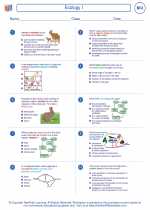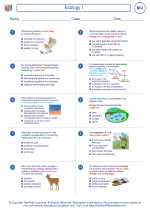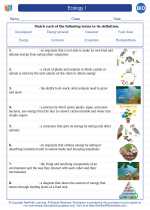Feedback Mechanisms in Biology
In biology, feedback mechanisms are processes that help maintain the stability and homeostasis of an organism's internal environment. These mechanisms involve the detection of changes in the internal environment and the initiation of responses to counteract those changes, thereby maintaining a relatively stable internal state.
Types of Feedback Mechanisms
- Negative Feedback: This is the most common type of feedback mechanism in which the response to a stimulus results in the reduction or elimination of the stimulus. For example, in the regulation of body temperature, as the body temperature rises, the body initiates mechanisms (such as sweating) to lower the temperature back to the set point.
- Positive Feedback: In contrast to negative feedback, positive feedback mechanisms amplify or reinforce the initial stimulus. This can lead to a rapid change in the system. An example of positive feedback is the process of blood clotting, where the formation of a blood clot triggers further clotting until the clotting process is complete.
Examples of Feedback Mechanisms
Example 1: Thermoregulation
When the body temperature rises above the set point, the skin receptors detect the change and send signals to the brain. In response, the brain initiates mechanisms such as sweating and vasodilation to release heat and lower the body temperature. Once the body temperature returns to the set point, the sweating and vasodilation processes are inhibited, preventing further cooling of the body.
Example 2: Blood Glucose Regulation
After a meal, blood glucose levels rise. This increase is detected by the pancreas, which then releases insulin. Insulin promotes the uptake of glucose by cells, leading to a decrease in blood glucose levels. Conversely, when blood glucose levels drop, the pancreas releases glucagon, which stimulates the release of glucose from storage sites, raising the blood glucose levels back to normal.
Study Guide
To understand feedback mechanisms in biology, consider the following study guide:
- Define feedback mechanisms and explain their significance in maintaining homeostasis.
- Differentiate between negative and positive feedback mechanisms with suitable examples.
- Explore specific examples of feedback mechanisms in the human body, such as thermoregulation, blood glucose regulation, and blood clotting.
- Discuss the role of various organs and systems, including the nervous system, endocrine system, and integumentary system, in regulating feedback mechanisms.
- Consider the implications of dysfunction in feedback mechanisms, such as the development of diseases like diabetes or heat stroke.
- Apply your knowledge of feedback mechanisms to analyze real-world scenarios and propose potential interventions to restore homeostasis.
By mastering the concept of feedback mechanisms, you'll gain a deeper understanding of how living organisms maintain internal stability, which is essential for their survival and proper functioning.
[Feedback Mechanisms] Related Worksheets and Study Guides:
.◂Biology Worksheets and Study Guides High School. Ecology I

 Worksheet/Answer key
Worksheet/Answer key
 Worksheet/Answer key
Worksheet/Answer key
 Worksheet/Answer key
Worksheet/Answer key
 Vocabulary/Answer key
Vocabulary/Answer key
 Vocabulary/Answer key
Vocabulary/Answer key
